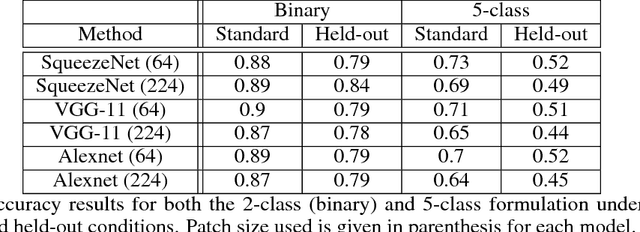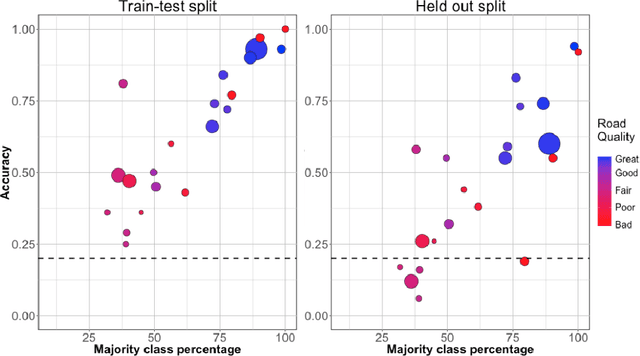Assigning a Grade: Accurate Measurement of Road Quality Using Satellite Imagery
Paper and Code
Dec 06, 2018


Roads are critically important infrastructure to societal and economic development, with huge investments made by governments every year. However, methods for monitoring those investments tend to be time-consuming, laborious, and expensive, placing them out of reach for many developing regions. In this work, we develop a model for monitoring the quality of road infrastructure using satellite imagery. For this task, we harness two trends: the increasing availability of high-resolution, often-updated satellite imagery, and the enormous improvement in speed and accuracy of convolutional neural network-based methods for performing computer vision tasks. We employ a unique dataset of road quality information on 7000km of roads in Kenya combined with 50cm resolution satellite imagery. We create models for a binary classification task as well as a comprehensive 5-category classification task, with accuracy scores of 88 and 73 percent respectively. We also provide evidence of the robustness of our methods with challenging held-out scenarios, though we note some improvement is still required for confident analysis of a never before seen road. We believe these results are well-positioned to have substantial impact on a broad set of transport applications.
 Add to Chrome
Add to Chrome Add to Firefox
Add to Firefox Add to Edge
Add to Edge